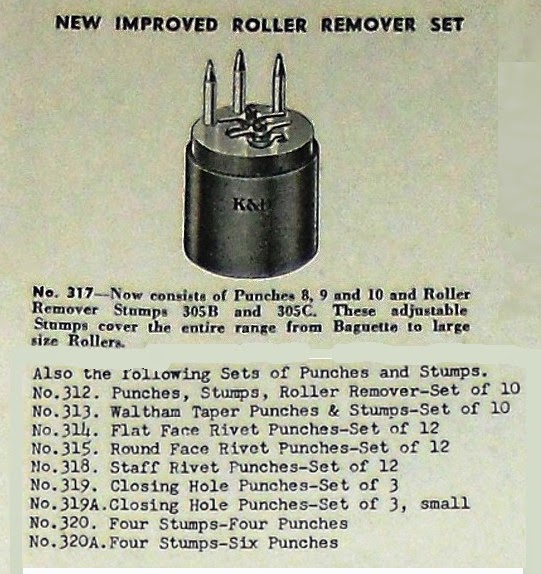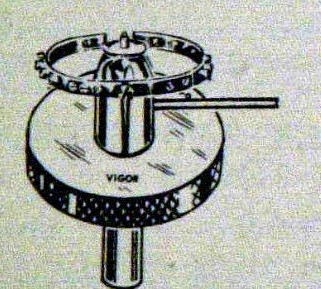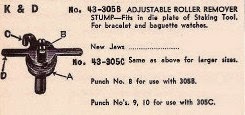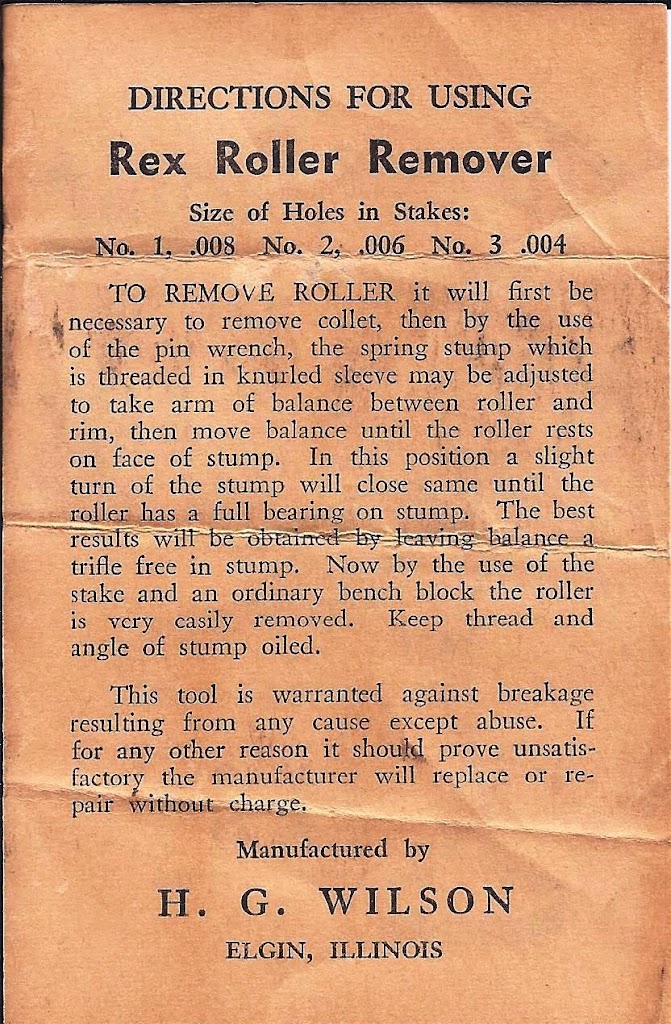Students of horology tend to focus on mechanical watches. I didn’t work on a quartz movement for years and when I did, it reminded me of “electric shop” in high school. Watchmakers have a fascination with mechanical movements and that means escape mechanisms and specifically the balance wheel.
Most of the work I have done in restoration involves replacing balance staffs. If you can re-staff a balance, you can by broken watches on eBay inexpensively. I’m trying to keep away from the word cheap.
Most of the Hamilton watches I purchase have broken balance staffs. That means removing the balance assembly, the collet and hairspring and the roller table. Not many tools for removing collets exist. I use a K&D collet fork for pocket watches (size 12-18) and a Bergeon for bracelets (size 0-22/0).
Once we remove the collet and hairspring, we need to remove the roller. A plethora of roller tools exist out there. In speaking with numerous watchmakers, most have said that they used the Rex Roller Remover. That surprised me. I had always used the K&D 305, because that’s the only tool we had in the lab.
Since the end of World War II, watch schools have used K&D staking sets and the majority of those came with the 305 adjustable table removers – figures 3 and 6. In practice, however, watchmakers bought their tools from a variety of sources. I didn’t know that.
I see many Rex sets on eBay and other sites on the Internet. Those funny black cylinders seem to show up more often than not. They also sell for less than the K&D.
I decided to look into adjustable roller removers and found that K&D came late to the market. Roller remover stumps almost always appeared in staking sets, but Rex invented the adjustable sumps. I’ve also found that they have a superior configuration.
Figure 1 came from an old supply house catalog. Figure 2 shows how the tool worked and Figure 4 explains how it works. The Rex uses a tiny rod to tighten the stump’s teeth as they settle between the roller table and balance wheel. K&D requires a staking frame and the user to tighten the stump by turning either the chrome bottom (Figure 6) or the wing (on the older model Figure 3).
K&D had some difficulty achieving market adoption for the 305. The company included it in most of the staking boxes they sold beginning in 1946. They even changed the look of their original 305 (Figure 3) to resemble the Rex. Finally, they packaged the 305 to look like the Rex – Figure 7.
I have started using the Rex. The jury is still out between it and the early 305. I suggest you look at the shape of the stump head. Each iteration differs. Regardless, don’t dismiss the Rex. She might now look as hot as the younger model, but she’s a bargain.
|
|
|
||||||
[Click on image to enlarge]
|
|
|
 |
| Figure 7 |





